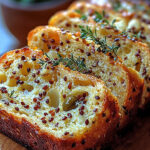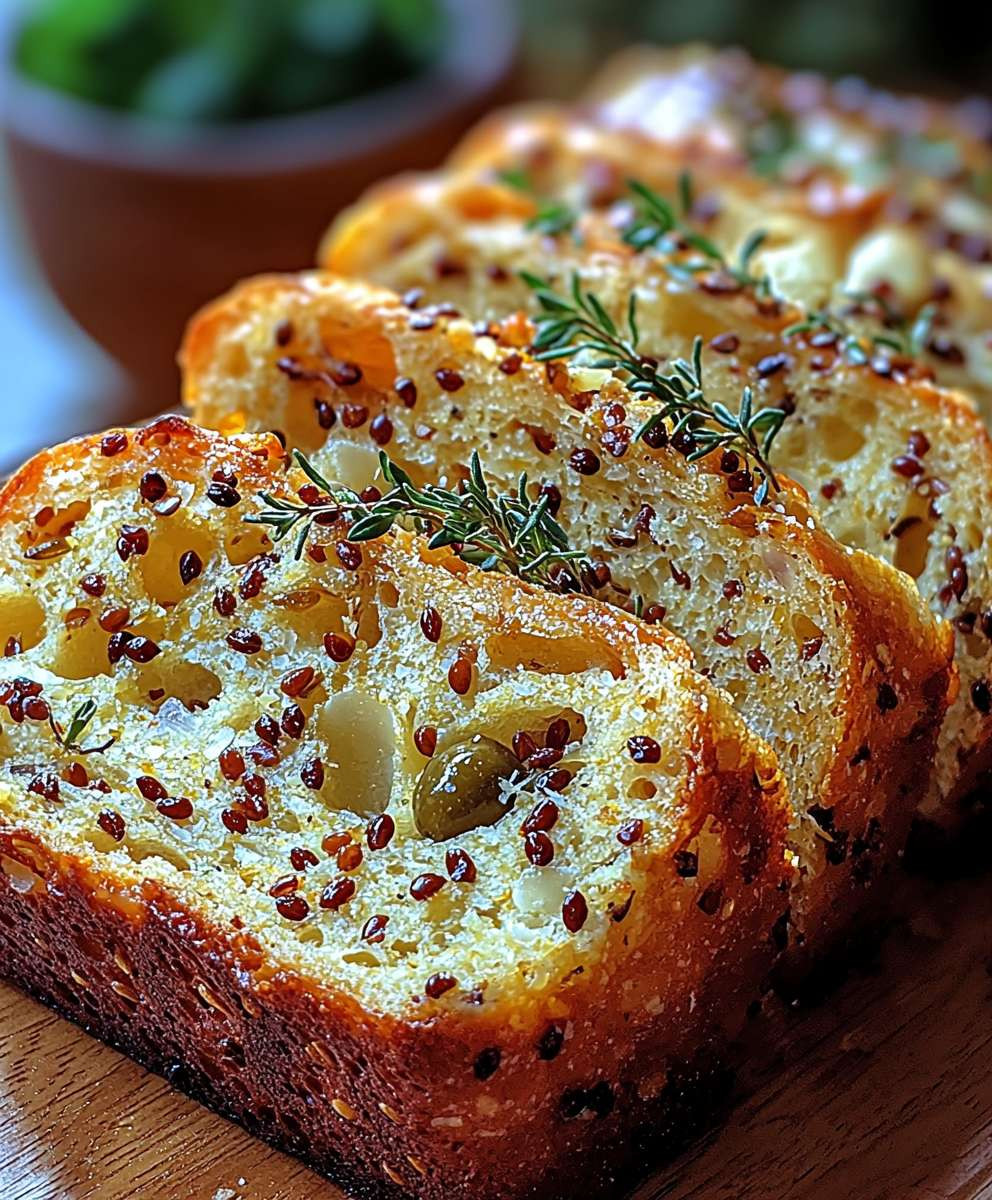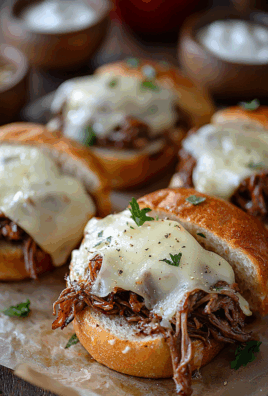Cheese Olive Quick Bread: Prepare to be amazed by this incredibly easy and flavorful bread that requires no yeast, no kneading, and minimal effort! Imagine sinking your teeth into a warm, savory slice, studded with salty olives and rich, melted cheese. This isn’t just bread; it’s an experience.
Quick breads, like this delightful Cheese Olive Quick Bread, have a fascinating history. They emerged as a convenient alternative to traditional yeast breads, particularly popular in the United States during the 19th century with the advent of chemical leavening agents like baking powder and baking soda. This innovation allowed home cooks to create delicious, satisfying breads in a fraction of the time.
But why is this particular combination so irresistible? The answer lies in the perfect balance of flavors and textures. The sharpness of the cheese complements the briny olives beautifully, creating a savory explosion in every bite. The crumb is tender and moist, making it perfect for enjoying on its own, alongside a hearty soup, or as part of a charcuterie board. Its simplicity is another major draw – anyone, regardless of their baking experience, can whip up this impressive bread in under an hour. So, let’s get baking and discover the magic of this quick and easy delight!
Ingredients:
- 2 cups all-purpose flour
- 1 tablespoon baking powder
- 1/2 teaspoon baking soda
- 1/2 teaspoon salt
- 1/4 teaspoon black pepper
- 1/4 teaspoon garlic powder
- 1/4 teaspoon dried oregano
- 1 1/2 cups shredded cheddar cheese, divided
- 1/2 cup chopped green olives, pitted
- 1/4 cup chopped black olives, pitted
- 1 1/4 cups buttermilk
- 1/4 cup olive oil
- 1 large egg, lightly beaten
Preparing the Dough:
- Preheat your oven to 375°F (190°C). Grease and flour a 9×5 inch loaf pan. This will prevent the bread from sticking and ensure easy removal after baking. I like to use a cooking spray that contains flour for extra insurance.
- In a large bowl, whisk together the flour, baking powder, baking soda, salt, pepper, garlic powder, and oregano. Make sure everything is well combined. This ensures that the leavening agents are evenly distributed, resulting in a consistent rise.
- Add 1 cup of the shredded cheddar cheese, the green olives, and the black olives to the dry ingredients. Toss to coat. This helps prevent the cheese and olives from sinking to the bottom of the loaf during baking.
- In a separate bowl, whisk together the buttermilk, olive oil, and egg. Ensure the egg is fully incorporated into the wet ingredients for a smooth batter.
- Pour the wet ingredients into the dry ingredients and stir until just combined. Be careful not to overmix. Overmixing can develop the gluten in the flour, resulting in a tough bread. A few streaks of flour are okay.
Baking the Bread:
- Pour the batter into the prepared loaf pan and spread evenly. The batter will be quite thick, which is perfectly normal.
- Sprinkle the remaining 1/2 cup of shredded cheddar cheese over the top of the loaf. This will create a beautiful, cheesy crust.
- Bake for 50-60 minutes, or until a wooden skewer inserted into the center comes out clean. The baking time may vary depending on your oven, so start checking for doneness around 50 minutes. If the top is browning too quickly, you can loosely tent it with aluminum foil.
- Let the bread cool in the pan for 10 minutes before transferring it to a wire rack to cool completely. This prevents the bread from sticking to the pan and allows it to cool evenly.
Tips and Variations:
Here are a few ideas to customize this cheese olive quick bread to your liking:
- Cheese Variations: Experiment with different types of cheese. Gruyere, Monterey Jack, or even a sharp provolone would be delicious additions. You could also use a combination of cheeses for a more complex flavor.
- Olive Variations: Feel free to use different types of olives, such as Kalamata or Castelvetrano. Just be sure to pit them before chopping. You can also adjust the amount of olives to your preference.
- Herb Variations: Try adding other herbs, such as rosemary, thyme, or basil. Fresh herbs would also work well, just be sure to chop them finely.
- Spice it Up: Add a pinch of red pepper flakes to the batter for a little heat.
- Add-ins: Consider adding sun-dried tomatoes, roasted red peppers, or even crumbled bacon to the batter.
- Gluten-Free Option: You can substitute the all-purpose flour with a gluten-free all-purpose flour blend. Be sure to use a blend that contains xanthan gum for best results.
- Make it Savory: For a more savory flavor, add a tablespoon of Dijon mustard to the wet ingredients.
- Serving Suggestions: This bread is delicious served warm with butter or olive oil. It’s also great toasted and topped with cream cheese or ricotta. It pairs perfectly with soups, salads, or charcuterie boards.
- Storage: Store the bread in an airtight container at room temperature for up to 3 days, or in the refrigerator for up to a week. You can also freeze the bread for longer storage. Wrap it tightly in plastic wrap and then in aluminum foil before freezing.
Troubleshooting:
Here are some common issues you might encounter and how to fix them:
- Bread is too dense: This could be due to overmixing the batter or using old baking powder or baking soda. Be sure to use fresh leavening agents and avoid overmixing.
- Bread is too dry: This could be due to overbaking or using too much flour. Be sure to measure the flour accurately and check for doneness around 50 minutes.
- Bread is not rising: This could be due to using old baking powder or baking soda, or not preheating the oven properly. Be sure to use fresh leavening agents and preheat the oven to the correct temperature.
- Bread is sticking to the pan: This could be due to not greasing and flouring the pan properly. Be sure to grease and flour the pan thoroughly before pouring in the batter.
- Bread is browning too quickly: This could be due to the oven being too hot. If the top of the bread is browning too quickly, you can loosely tent it with aluminum foil.
Detailed Explanation of Ingredients:
All-Purpose Flour:
All-purpose flour is the foundation of this bread, providing structure and texture. It’s a versatile flour that works well in a variety of baked goods. Make sure to measure it accurately, as too much flour can result in a dry, dense bread. I recommend using the spoon and level method: spoon the flour into the measuring cup and then level it off with a knife.
Baking Powder and Baking Soda:
These are the leavening agents that help the bread rise. Baking powder is a complete leavening agent, meaning it contains both an acid and a base. Baking soda, on the other hand, requires an acidic ingredient to activate it. In this recipe, the buttermilk provides the acidity needed to activate the baking soda. It’s important to use fresh baking powder and baking soda, as they lose their potency over time.
Salt:
Salt enhances the flavor of the bread and also helps to control the yeast activity. It’s important to use the correct amount of salt, as too much can inhibit the rise of the bread, while too little can result in a bland flavor.
Black Pepper, Garlic Powder, and Dried Oregano:
These spices add flavor and depth to the bread. Feel free to adjust the amounts to your liking. You can also experiment with other spices, such as rosemary, thyme, or basil.
Shredded Cheddar Cheese:
Cheddar cheese adds a rich, cheesy flavor to the bread. I recommend using a sharp cheddar cheese for the most flavor. You can also use other types of cheese, such as Gruyere, Monterey Jack, or provolone.
Green and Black Olives:
Olives add a salty, briny flavor to the bread. I recommend using pitted olives for convenience. You can also use other types of olives, such as Kalamata or Castelvetrano.
Buttermilk:
Buttermilk adds moisture and tanginess to the bread. It also helps to activate the baking soda, resulting in a lighter, more tender crumb. If you don’t have buttermilk, you can make a substitute by adding 1 tablespoon of lemon juice or white vinegar to 1 cup of milk. Let it sit for 5 minutes before using.
Olive Oil:
Olive oil adds moisture and flavor to the bread. I recommend using a good quality olive oil for the best flavor. You can also use other types of oil, such as vegetable oil or canola oil.
Egg:
The egg binds the ingredients together and adds richness to the bread. Be sure to lightly beat the egg before adding it to the wet ingredients.
Serving and Enjoying Your Cheese Olive Quick Bread:
Once your Cheese Olive Quick Bread has cooled completely, it’s time to slice and enjoy! This bread is incredibly versatile and can be served in a variety of ways.
- Warm with Butter: A classic way to enjoy this bread is simply sliced and served warm with a pat of butter. The warmth of the bread melts the butter perfectly, creating a delicious and comforting treat.
- Toasted with Cream Cheese: Toasting a slice of this bread brings out the cheesy and olive flavors even more. Spread with cream

Conclusion:
This Cheese Olive Quick Bread isn’t just another recipe; it’s a flavor explosion waiting to happen in your kitchen! From the incredibly simple preparation to the savory, satisfying taste, it’s a guaranteed crowd-pleaser. The combination of sharp cheese and salty olives creates a symphony of flavors that’s both comforting and exciting. Seriously, if you’re looking for a quick and easy bread that delivers big on taste, look no further. But why is this particular recipe a must-try? Well, beyond the ease of preparation (we’re talking minimal effort for maximum reward!), it’s incredibly versatile. It’s perfect as a side to your favorite soup or salad, makes a fantastic addition to a cheese board, or can even stand alone as a delicious snack. Imagine slicing a warm piece, the aroma of cheese and olives filling the air – pure bliss! And the possibilities don’t stop there! Feel free to get creative with your additions. Want a little heat? Add a pinch of red pepper flakes or some chopped jalapeños. Craving something a bit more herbaceous? Incorporate some fresh rosemary or thyme. You could even experiment with different types of cheese – Gruyere, Fontina, or even a smoked Gouda would add a unique twist. For a Mediterranean flair, sun-dried tomatoes would be a fantastic addition. The beauty of this recipe is that it’s a blank canvas for your culinary creativity. Serving suggestions are endless. I personally love it toasted with a smear of cream cheese or ricotta. It’s also amazing dipped in olive oil and balsamic vinegar. For a more substantial meal, try using it to make grilled cheese sandwiches – trust me, you won’t regret it! And if you’re hosting a party, this bread is a guaranteed hit. Slice it up and serve it alongside a selection of cheeses, meats, and olives for a truly impressive spread.Variations to Explore:
* Spicy Cheese Olive Quick Bread: Add 1/2 teaspoon of red pepper flakes to the batter. * Herbaceous Cheese Olive Quick Bread: Incorporate 1 tablespoon of chopped fresh rosemary or thyme. * Mediterranean Cheese Olive Quick Bread: Add 1/2 cup of chopped sun-dried tomatoes. * Cheese Lover’s Delight: Use a blend of your favorite cheeses, such as Gruyere, Fontina, and Parmesan. I truly believe that everyone should have this Cheese Olive Quick Bread recipe in their repertoire. It’s a lifesaver when you need a quick and easy bread, and it’s always a hit with family and friends. So, what are you waiting for? Get in the kitchen and give it a try! I’m so confident that you’ll love this recipe that I can’t wait to hear about your experience. Did you try any variations? What did you serve it with? Share your photos and comments below – I’m eager to see your creations! Happy baking! Let me know if you have any questions, and I’ll do my best to help. I hope this becomes a staple in your kitchen, just like it is in mine. Enjoy! Print
Cheese Olive Quick Bread: Easy Recipe & Baking Tips
- Total Time: 75 minutes
- Yield: 1 loaf (9×5 inch) 1x
Description
Savory, cheesy quick bread with cheddar, green olives, and black olives. Great as a snack, appetizer, or side.
Ingredients
Scale- 2 cups all-purpose flour
- 1 tablespoon baking powder
- 1/2 teaspoon baking soda
- 1/2 teaspoon salt
- 1/4 teaspoon black pepper
- 1/4 teaspoon garlic powder
- 1/4 teaspoon dried oregano
- 1 1/2 cups shredded cheddar cheese, divided
- 1/2 cup chopped green olives, pitted
- 1/4 cup chopped black olives, pitted
- 1 1/4 cups buttermilk
- 1/4 cup olive oil
- 1 large egg, lightly beaten
Instructions
- Preheat your oven to 375°F (190°C). Grease and flour a 9×5 inch loaf pan.
- In a large bowl, whisk together the flour, baking powder, baking soda, salt, pepper, garlic powder, and oregano.
- Add 1 cup of the shredded cheddar cheese, the green olives, and the black olives to the dry ingredients. Toss to coat.
- In a separate bowl, whisk together the buttermilk, olive oil, and egg.
- Pour the wet ingredients into the dry ingredients and stir until just combined. Be careful not to overmix.
- Pour the batter into the prepared loaf pan and spread evenly.
- Sprinkle the remaining 1/2 cup of shredded cheddar cheese over the top of the loaf.
- Bake for 50-60 minutes, or until a wooden skewer inserted into the center comes out clean. If the top is browning too quickly, you can loosely tent it with aluminum foil.
- Let the bread cool in the pan for 10 minutes before transferring it to a wire rack to cool completely.
Notes
- Cheese Variations: Experiment with different types of cheese like Gruyere, Monterey Jack, or provolone.
- Olive Variations: Use different types of olives, such as Kalamata or Castelvetrano.
- Herb Variations: Add other herbs, such as rosemary, thyme, or basil.
- Spice it Up: Add a pinch of red pepper flakes for a little heat.
- Add-ins: Consider adding sun-dried tomatoes, roasted red peppers, or crumbled bacon.
- Gluten-Free Option: Substitute the all-purpose flour with a gluten-free all-purpose flour blend that contains xanthan gum.
- Make it Savory: For a more savory flavor, add a tablespoon of Dijon mustard to the wet ingredients.
- Serving Suggestions: Serve warm with butter or olive oil, or toasted with cream cheese or ricotta. Pairs perfectly with soups, salads, or charcuterie boards.
- Storage: Store in an airtight container at room temperature for up to 3 days, or in the refrigerator for up to a week. Freeze for longer storage, wrapped tightly in plastic wrap and then in aluminum foil.
- Troubleshooting:
- Bread is too dense: Avoid overmixing and use fresh baking powder/soda.
- Bread is too dry: Measure flour accurately and don’t overbake.
- Bread is not rising: Use fresh baking powder/soda and preheat the oven properly.
- Bread is sticking to the pan: Grease and flour the pan thoroughly.
- Bread is browning too quickly: Tent with aluminum foil.
- Prep Time: 15 minutes
- Cook Time: 50






Leave a Comment